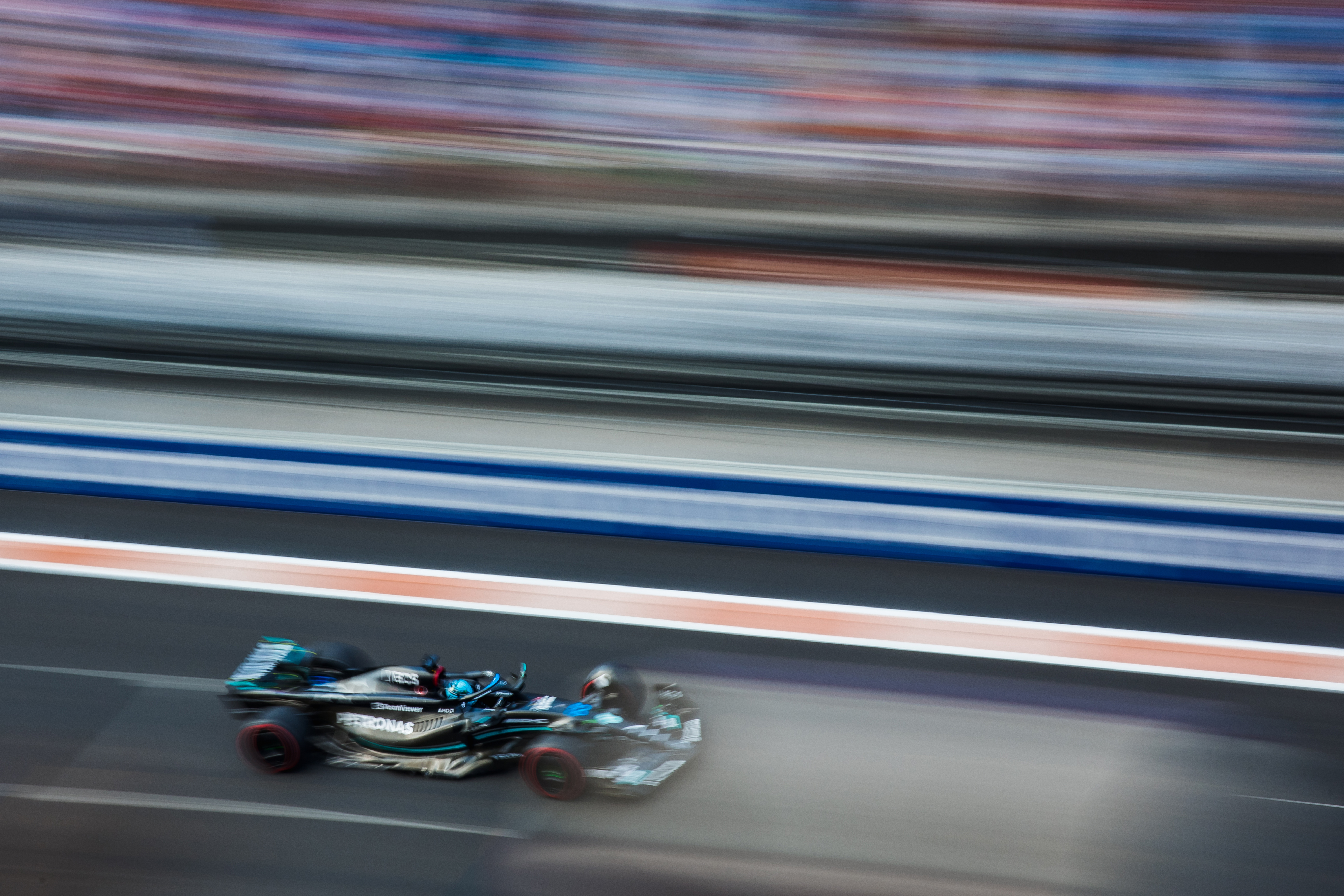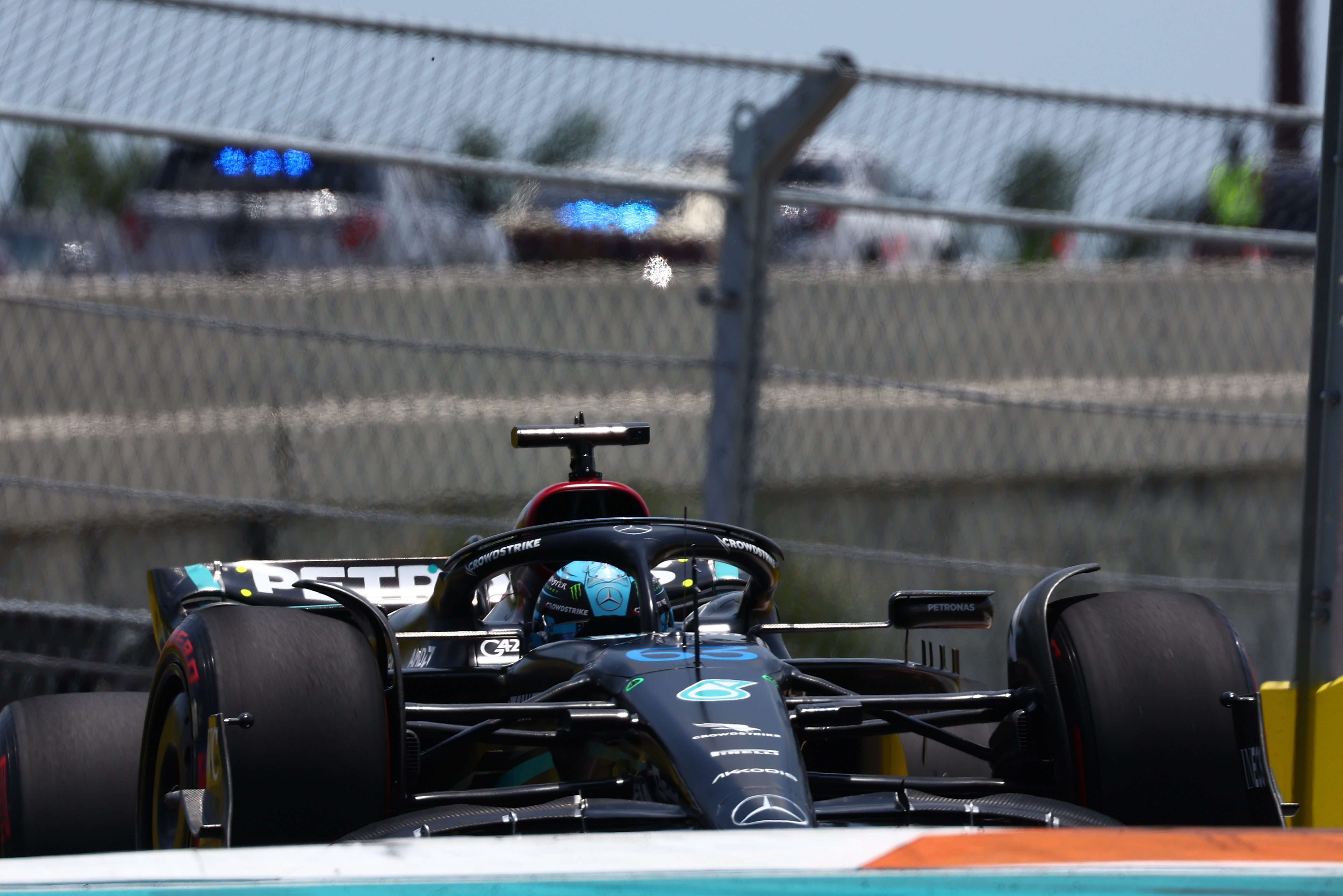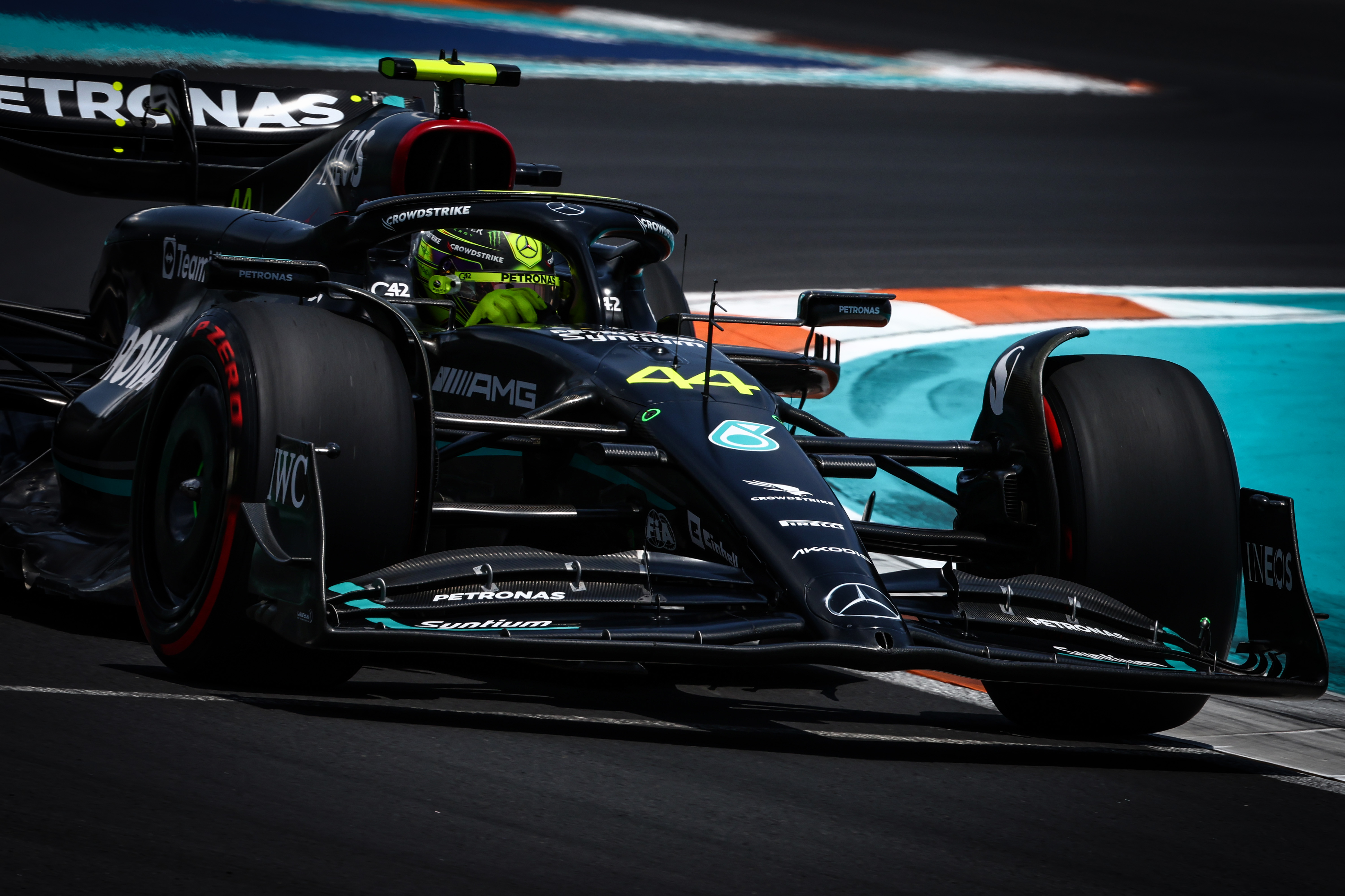For Sergio Perez this was a perfect storm. The elements that came together to put him on the Miami Grand Prix pole were self-evident: Charles Leclerc spinning the red flags into existence late enough into the final session that the order was frozen at the point where Max Verstappen had not put a lap together but Perez had.
Run for run throughout the weekend, Verstappen had somewhere between three and four tenths over his team-mate here, in stark contrast to Baku. But Verstappen was taking full responsibility for having failed to nail his first attempt at a Q3 lap, getting crossed up through Turn 5 and abandoning, ultimately leaving him ninth on the grid.
A gusty tailwind through there had probably played its part in randomising things, a little gift from the elements to liven up what was otherwise shaping up into a weekend of uncontested Verstappen domination.
The gripless track surface played its part in the unusual grid too, with Fernando Alonso’s Aston Martin lined up behind Perez from Carlos Sainz’s Ferrari, Kevin Magnussen’s Haas and Pierre Gasly’s Alpine. But neither wind nor surface adequately explained Mercedes’ woeful performance here, with George Russell and Lewis Hamilton ending up sixth and 13th respectively.

Russell’s lap was a second off pole, 0.6s off Aston and 0.5s adrift of Ferrari. Although that frozen frame of performance requires fuller explanation – it’s not comparing like with like as Perez and Sainz did their times on new tyres, Alonso and Russell on used – it aligns with a general truth that the Mercedes was in its least competitive form of the season to date.
There is a feasible part-explanation for why its deficit was three-times that of Melbourne: Albert Park is the only heavily front-limited track we’ve been to so far and the Mercedes is a rear-limited car so will be at its least bad on a front-limited track. Hence only a 0.3s deficit to Verstappen in Australia but three times that to Perez in Miami.
But that doesn’t explain everything – and the team acknowledges it doesn’t actually know. That lack of understanding of the car’s bizarre fluctuations is part of the problem, as Toto Wolff admitted. “This is not a nice car, not a good car. I would not even be able to point out where [the time loss] fundamentally was. It’s everywhere. The basis of the performance of the car is the lack of understanding of the car through the whole span of the intricacies of the car. The performance is just really bad.”
The source of a weakness in a car can be different from where that weakness shows up in a GPS trace of a lap. If its first-order problem is rear instability in high-speed corners, for example, it can be that running more rear wing eases that problem but compromises its slow-corner rotation. That might be the best set-up for the car around a circuit on a given day, but it will be less competitive than at tracks where there’s a wider set-up window within its limitations.

Looking at the GPS data of the car here, its biggest loss by far is through the slow switchbacks of Turns 11/12/13/14/15 towards the end of the lap. Visually, the car looks a little lazy on initial turn-in then stiff and uncompliant over the kerbs. A Red Bull looks alive there, a Ferrari beautifully agile. That looks to be the compromise needed to adequately control the rear of the Mercedes through the long, fast kinks of sector one.
Comparing the best Red Bull time (that of Verstappen in Q2 on used tyres) to the best Mercedes time (Russell, also in Q2), when they enter Turn 11 – with well over half the lap completed – the two cars are separated by just over 0.3s. The Mercedes has lost those three tenths largely to the Red Bull’s much superior speed through the high-speed sweeps in the first part of the lap (the RB19 is 12km/h faster at Turn 6).
But it loses masses of time through the short Turns 11-15 switchback sequence, coming out of there almost half a second down over the lap. It has lost 0.2s right there, and visually it looks all of that.
At the tight Turn 11 which begins the sequence it can be seen from the GPS that although the Red Bull’s mid-corner minimum speed is no higher than that of the Mercedes, that minimum is much earlier in the corner for Verstappen, who is able to get on the power earlier simply because the car has rotated immediately.
Russell not only has to wait before he can get on the throttle but in a switchback series of corners such as this where car placement is crucial, this poor start to the sequence compromises him all the way through. He’s later on the gas everywhere as he wrestles with getting the car to change direction.
The remainder of the deficit comes from the Red Bull’s superior straightline speed, another penalty of the higher wing level needed to control the wayward rear.

That doesn’t fully explain why Hamilton failed to graduate from Q2. That was all about his compromised out-lap, traffic preventing him from adequately preparing his tyres, leaving him down on grip in the first few turns. That came from putting both cars out there right at the end of the session, attempting to take the full benefit from the increasing grip of the track as it steadily cooled.
The only reason it was necessary to try for that was the basic shortfall in the car’s performance.
That’s just where Mercedes is at.



